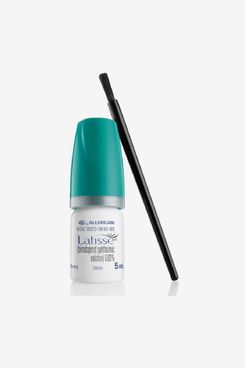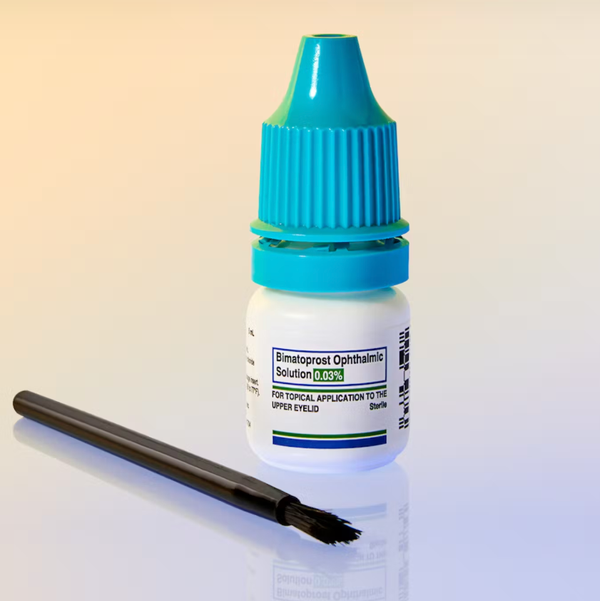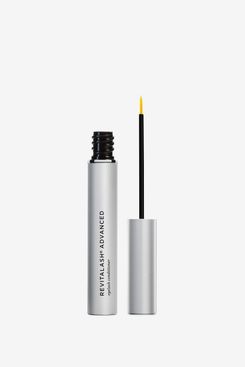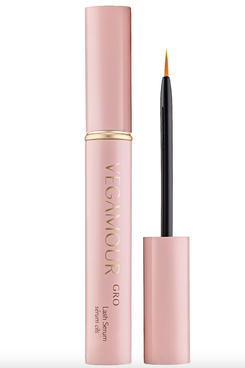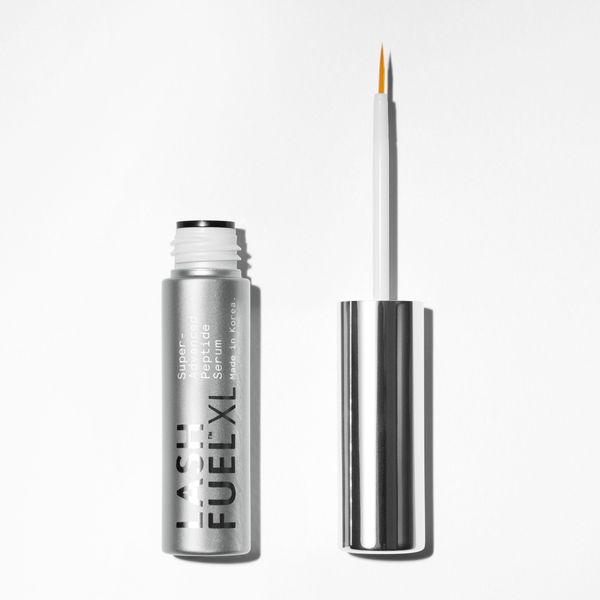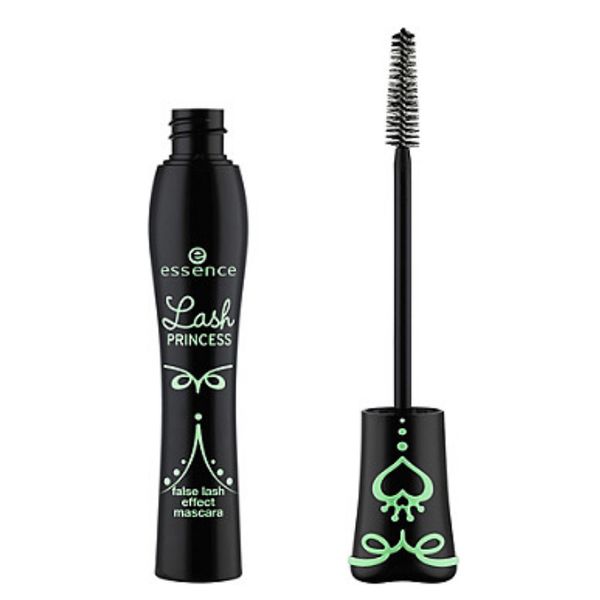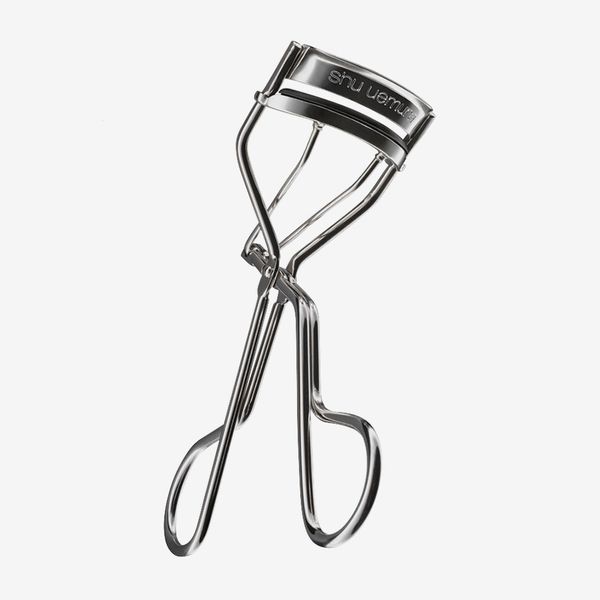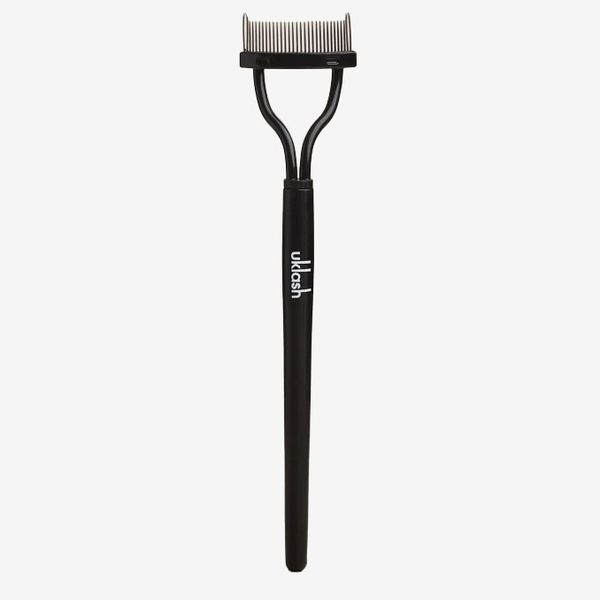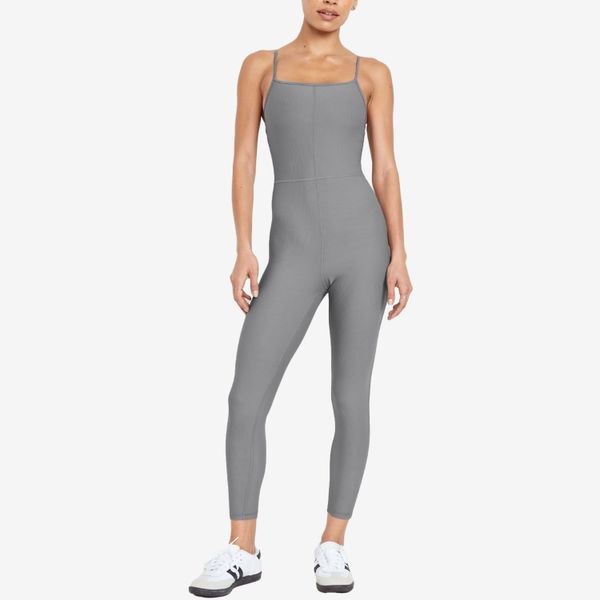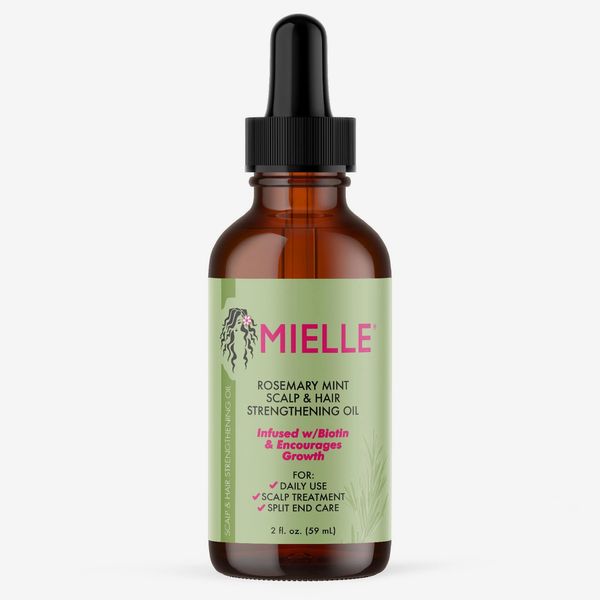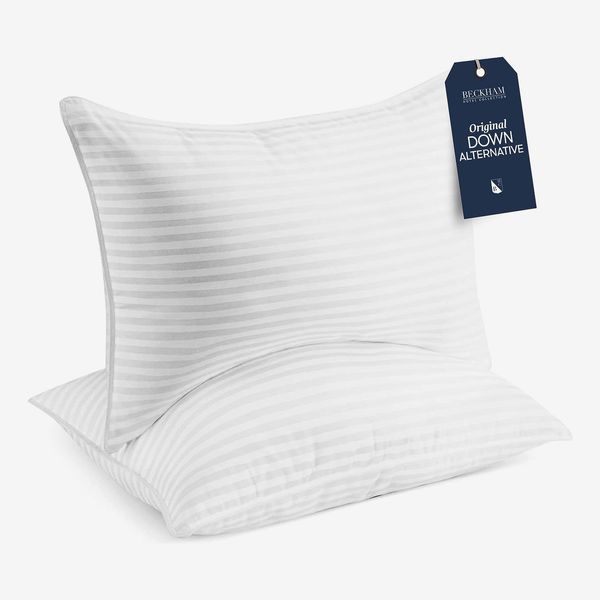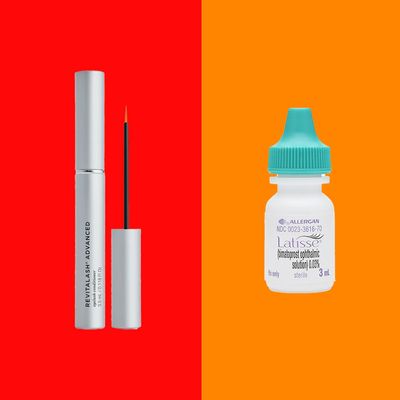
In this article
If you want fluttery, natural lashes, using an eyelash serum (or lash serum, as it’s more commonly referred to) may have crossed your mind. In theory, the results seem incredible: diligently apply a layer to your lashes each night, and within six weeks you’ll be rewarded with longer, thicker, and healthier eyelashes. But when one reads reports — and horror stories — about lash serums causing redness, facial fat loss, and even a change in eye color, it’s hard to know if the risk is worth the reward. Here’s what to know: As lash serums have surged in popularity, reports have begun to trickle out about their potential side effects, including redness and irritation (reversible), as well as a change in iris-color (irreversible). When they occur, they’re due to a type of ingredient known as a prostaglandin. But these side effects, particularly the irreversible kind, are “rare,” according to two dermatologists and one ophthalmologist I interviewed on the topic.
There is only one kind of FDA-approved prostaglandin-containing serum on the market, and that is Latisse. It contains the prostaglandin analog bimatoprost. Other over-the-counter-products — GrandeLash, RevitaLash — are not FDA-approved (that’s not to say they’re unlicensed, just that they’ve not been tested and approved in the way Latisse has). “Some of them are using a lower potency prostaglandin; it won’t be bimatoprost [Latisse], it will be other less potent prostaglandins,” says ophthalmologist Dr. Jeffrey Dello Russo. “So there really is an active ingredient, but again, they haven’t been evaluated for their efficacy or safety.”
But not all lash serums contain prostaglandins, either. There are plenty of prostaglandin-free options available — although with far less research into their efficacy (but more on that below). Quite simply, we do know that (some of) the prostaglandin-containing serums work, and fast, too: a timeframe of four to eight weeks. Ultimately, it’s up to you to weigh up the risks and the rewards of using them — this product is going to be applied extremely close to your eyeball. To help, I’ve included some expert advice, information on FDA approval, as well as firsthand testing accounts of a few formulas to help you make your decision.
What we’re looking for
Prostaglandins
Prostaglandins are hormone-like substances; the ones found in lash serums are a synthetic kind of prostaglandin, known as prostaglandin analogs. Those analogs have been used in medication to treat glaucoma patients; when those patients had the “side effect” of thick, luscious eyelashes, somebody connected the dots, and lash serums were born.
Both in glaucoma-medicine users and lash-serum users, side effects have been reported. “The really common ones are along the eyelash margin where you’re applying it. The skin can turn temporarily red or brown, and there can be some minor eye irritation,” says Dr. Shannon Humphrey, medical director at Humphrey & Beleznay cosmetic dermatology. “You can even get eyelashes sprouting where you didn’t have them before — you’ll often see people get some tiny hairs right in the medial campus, and it’s a bit funny, because, like, people don’t have hairs there. But all of those side effects are temporary, and so if you stop using it, they’ll go away.” Another side effect you may have heard of is prostaglandin periorbitopathy. “It’s basically fat reduction around the eye, which can make the eye look a little sunken,” says Dr. Humphrey. “It can also make the eyelid look a little bit heavier.” This side effect is rare, and usually found in older patients who have been administering glaucoma medication to their eyes for several years — however, although it is reversible, it is still a potential lash-serum risk.
A side effect I touched on above — a darkening of the iris color — is irreversible. “That is possible and that’s irreversible,” says Dr. Russo. “It’s reasonably rare, and mostly it’s with people with darker eyes, the serum darkens it more. But it’s a true possibility.” “Prostaglandins and prostaglandin analogs are not always that easy to tease out in ingredients lists,” says Dr. Humphrey. “If it has the word ‘prost’ in it, that’s a prostaglandin. But then there are many that have these crazy-long chemical names.” Prostaglandin analogs are also not pregnancy-safe, so women who are trying for a baby, pregnant, or postnatal should avoid them.
Other, non-prostaglandin ingredients
If you want to avoid the prostaglandins, there are plenty of prostaglandin-free formulas available. “Most of the ingredients in these that have a purported active effect are likely more like eyelash conditioners, so things like peptides or hyaluronic acid that hydrate at the base of the hair, and makes it less likely that that hair would break,” says Dr. Humphrey. “It might look a little glossier, might even coat the lash and look thicker, but I’m still waiting for someone to convince me that it can actually make eyelashes grow longer.” Dr. Russo also agreed that more natural remedies have no “pharmacological basis.” Dr. Humphrey did point out, though, that the less likely your lashes are to break or fall off, the more you’ll have, and the fuller they’ll look. So don’t write off prostaglandin-free formulas entirely — just know they’re less effective.
Price per month
When you stop using a lash serum, the benefits stop. As this is a long-term investment, below, I’ve included the likely price per month it’ll cost you to keep up the habit.
Best lash serum overall
Prostaglandin: Bimatoprost | Other ingredients: Citric acid, purified water, sodium hydroxide (to adjust pH and prolong shelf-life) | Price per month: $110–$150
As mentioned above, Latisse is the only FDA-approved eyelash-enhancing serum. “It does work. It takes about eight weeks of nightly use,” says Dr. Russo. “Paint the base of the lashes, at night before bed, then overnight the lashes absorb the medication.” Latisse contains prostaglandin analog bimatoprost, in a concentration of 0.03 percent. Bimatoprost works by keeping lashes in the growing phase for longer — similar to how minoxidil works to elongate the hair-growth phase. On the side effects, Dr. Russo says, “It’s a pretty low incidence of redness and irritation. As for the fat loss. I’ve never seen that.”
Crystal Martin, Strategist senior editor and Beauty Brief editor, has been using Latisse since August. Her verdict? “Really, it just works! My lashes are quite long now, longer than they’ve ever been, and long enough to get compliments from strangers,” she says. Martin admits that she isn’t the best when it comes to using the serum every single day — “I probably make it four to five times a week,” she says — but it has still worked excellently for her.
I’m not able to try this formula myself — I have a history of very, very sensitive eyes, the wrong mascara can set me off — but due to its FDA approval, professional endorsements, and Martin’s glowing review, I’m naming it our best eyelash serum overall. You will need a prescription, though: Latisse is not available over the counter. To get a prescription, there are retailers online where you can complete some medical questions that will be reviewed by an online pharmacist to assess if you’re a suitable candidate. After that, you can order it in monthly batches for about $100 to $130.
The best less-expensive lash serum
Prostaglandin: Bimatoprost | Other ingredients: Purified water | Price per month: $53
“Latisse exists in a generic, too,” says Dr. Russo. “This thing has been around for a while.” Generic bimatoprost is the same active ingredient as the branded Latisse, in the same concentration of 0.03 percent. That means that, like Latisse, it is also FDA-approved, with the same efficacy, and the same potential side effects. You also need a prescription for the generic bimatoprost, but the monthly cost is significantly lower. Although it’s a far cheaper, virtually identical product to our best overall, we didn’t give it our top spot as we have no personal experience testing or sourcing it.
The best drugstore lash serum
Prostaglandin: Isopropyl cloprostenate, cloprostenol ethyl amide | Other ingredients: Peptides | Price per month: $30-40
Cheaper still is RevitaLash — stocking up bi-annually will cost you $150. It was the preferred lash serum of Strategist senior editor Simone Kitchens, before she had to take a break due to pregnancy and nursing. “I loved it when I used it, I look back fondly at photos of that time,” she says. “I noticed a difference within a month. My lashes are a bit thin and short naturally, and sort of straight, so they started to naturally curve a bit with the length, in a nice way.” RevitaLash contains the prostaglandin isopropyl cloprostenate, different from Latisse’s bimatoprost, in that it is not FDA-approved. It’s also considered to be a weaker prostaglandin analog than bimatoprost — hence the lack of prescription required to purchase RevitaLash. As it’s weaker, it’s likely to be less effective than Latisse (but more research is needed). Though, for what it’s worth anecdotally, Kitchens didn’t find RevitaLash irritating, whereas with Latisse, she did.
The best prostaglandin-free lash serum
Prostaglandin: None | Other ingredients: Peptides and biotin | Price per month: $34
If you want to skip the prostaglandins altogether, double-board-certified dermatologist and surgeon Dr. Kristina Collins likes Vegamour. It contains plant-based actives like peptides that “promote keratin production, enhancing lash strength and thickness,” and biotin, to “prevent eyelash breakage,” explains Dr. Collins. She also adds “non-prostaglandin formulas can still be effective but often deliver more modest results. They can enhance lash health and reduce breakage, giving the appearance of fuller lashes over time.”
The best less-expensive prostaglandin-free lash serum
Prostaglandin: None | Other ingredients: Vitamins B5 and B7, panax ginseng-root extract, lipo-oligopeptide | Price per month: $25
This is the lash serum I’m currently testing: I’ve been applying it twice a day for around a month. My lashes aren’t longer, but they’re definitely shinier, as though they’ve been conditioned. I was drawn to this formula after chatting to Dr. Collins. I like that it’s packed full of peptides that can enhance keratin production. I’m also a contact-lens wearer with super-sensitive eyes, and I have no redness or side effects of any kind to report. I’m looking forward to seeing how my lashes will look with another couple of months of consistent usage: So far so good.
Some other lash enhancers we like:
Our experts
• Dr. Kristina Collins, double-board-certified dermatologist and surgeon
• Dr. Shannon Humphrey, medical director at Humphrey & Beleznay cosmetic dermatology
• Simone Kitchens, Strategist senior editor
• Crystal Martin, Strategist senior editor
• Dr. Jeffrey Dello Russo, ophthalmologist and LASIK eye surgeon
The Strategist is designed to surface useful, expert recommendations for things to buy across the vast e-commerce landscape. Every product is independently selected by our team of editors, whom you can read about here. We update links when possible, but note that deals can expire and all prices are subject to change.

